9 Stretches to Help Relieve Knee Pain When It’s Cold
8 minute read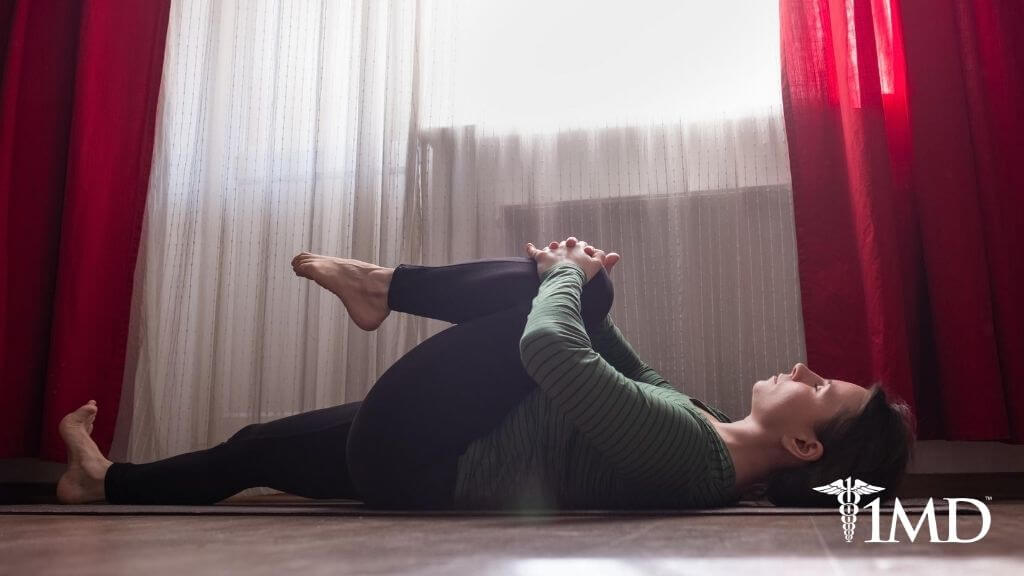
A common occurrence during Fall and Winter is that, when the weather starts cooling down, knee pain starts to act up. This isn’t just in your mind. Although not always the case, much like the cliche of an old man feeling a storm a-brewin’ in his knee, knee pain can actually be linked to drops in barometric pressure.
The distinct drop can cause reactions in everyone, especially those who live with arthritis. In fact, there are even online weather tools to help predict upcoming painful days. However, what some may not know about knee pain is that it can be alleviated with some simple at-home stretches.
The Best Moves for Knee Pain Relief
1. Wall Calf Stretch
The calf muscles, known as the bigger gastrocnemius and smaller soleus muscles, come together at the base of the calf and fuse with the Achilles tendon.
This line of connection pulls the heels up to allow forward movement when walking or running, which means keeping your legs and calves strong is integral for lower body health. Calf stretches help remove pressure from the back of the knee.
First, place your hands on a wall then put one leg straight back, making sure that the heel and foot are firmly planted on the floor. with the heel and foot firmly planted on the floor. Those with more motion in their knees and a little more experience stretching can continue to lean forward and bend down slightly for a deeper stretch in the back of the leg.
Try this stretch for 10 reps on each leg, ensuring that the stretch is held for five to ten seconds.
2. Standing Calf Stretch
While wall calf stretches are also done while standing, this stretch utilizes a step rather than a full wall. According to director of rehabilitation for Midwest Orthopaedics at Rush, Donna Williams, PT, MHS, standing calf stretches really help knee pain after exercise. When calves are left tight “it can lead to an inward movement of the knees,” which results in unwanted pain.
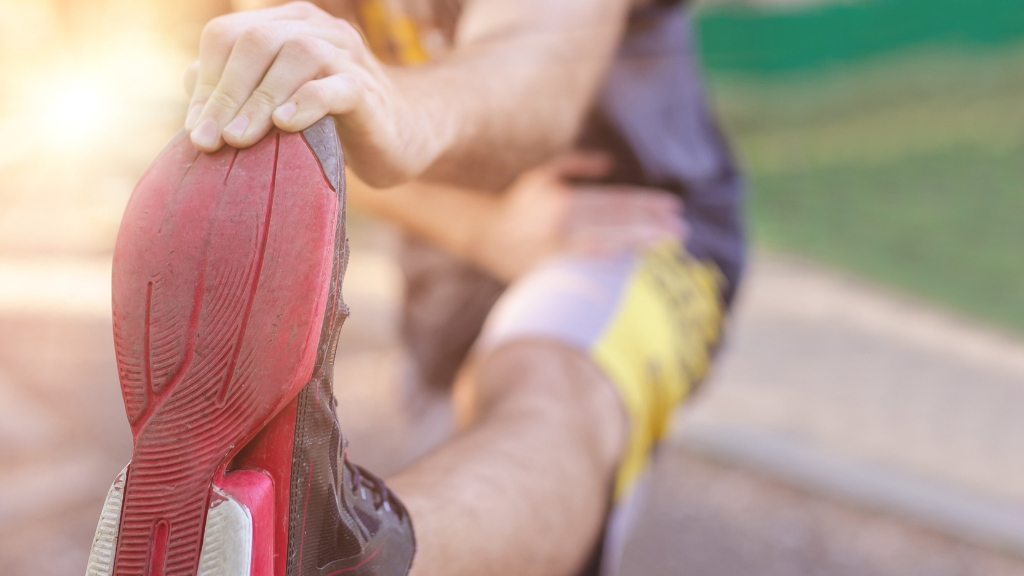
Start by standing in front of the step, placing one foot on the ground with the ball of the opposite foot on the step. Then begin dropping the heel of that foot past the step, holding for 30 seconds then switching to the opposite foot.
You can also try putting both feet on the step and dropping for an advanced stretch, but remember to hold onto something in front of you for safety purposes.
3. Standing Hamstring Stretch
Hamstrings are there to support your hips and knees. More often than not, undiagnosed hamstring strains are actually the root source of unexpected knee pains, which is why it’s important to stretch those hammies frequently so they don’t become stiff and prone to injury. Keeping ahead of any problems can help you stick to your favorite activities despite arthritis.
For the standing hamstring stretch, stand on one foot with the other heel down on the floor and toes pointed up, right in front of you. Bend forward slightly at the hips, allowing for your supporting knee to bend as you sit back, applying weight to the leg that is straight out in front of you.
Hold the position for four to six seconds and switch sides. You should be feeling the pull of this stretch in the hamstring of the straightened leg.
4. Hamstring Stretch
If you feel like you’re a bit on the uncoordinated side and would rather not stand on one foot to stretch, you can stretch your hamstrings while laying down. You’ll just need a resistance band, which can help with mobility in general.
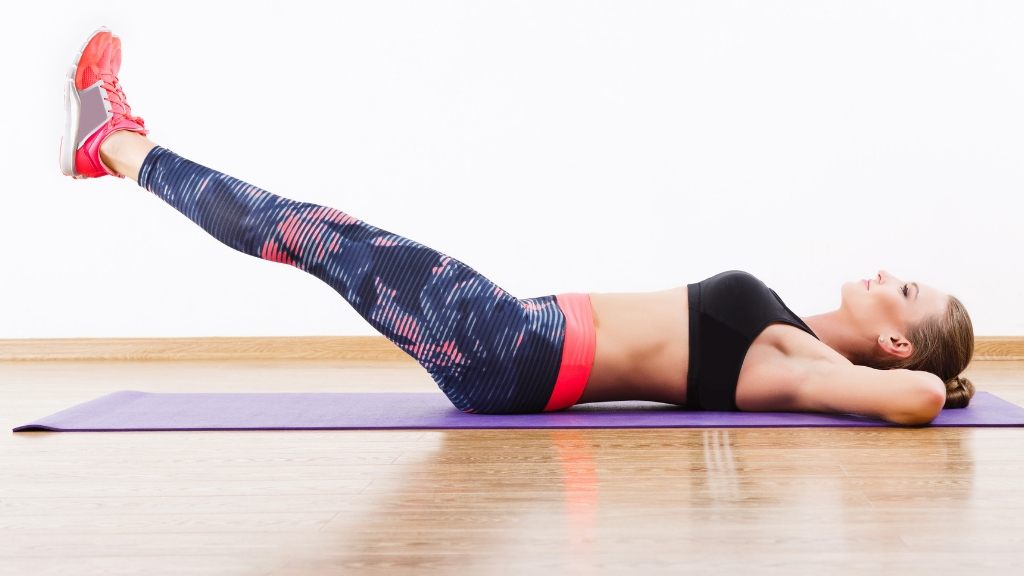
While laying down, faceup, keep one leg flat on the ground with your foot flexed, toes pointing to the sky. Then raise the opposite leg, with a resistance band wrapped around the flexed foot, and gently pull at a consistent strength rather than pulsing and alternate between relaxing and contracting the foot in the air.
Try ten to fifteen reps with five-second holds on each leg
5. Straight Leg Raise
After you’ve stretched your hamstring, it’s the perfect time to try the straight leg raise. While still lying face up, bend one knee, planting the foot on the ground. Now lift the other leg off the ground one foot, rotating it outward with toes point diagonally rather than up to the sky.
Try this stretch for ten to fifteen reps, building up the sets more and more, eventually adding weights as you become stronger.
6. Figure Four Stretch
This stretch targets the glutes as they can put too much pressure on quads and knees.
While still lying face up, cross one foot over the opposite quad. Bending that knee, hold the back of that thigh and lightly pull it towards your face, holding for five to ten seconds, then switching sides.
Repeat for five reps and feel that burn.
7. Half-Knee Hip & Quad Stretch
For added comfort use a yoga mat or pillow and kneel down on one knee with the opposite foot on the ground in front of your hip. Grab the foot behind you and lean forward into your front leg, continuing to push the front of your hip downward.
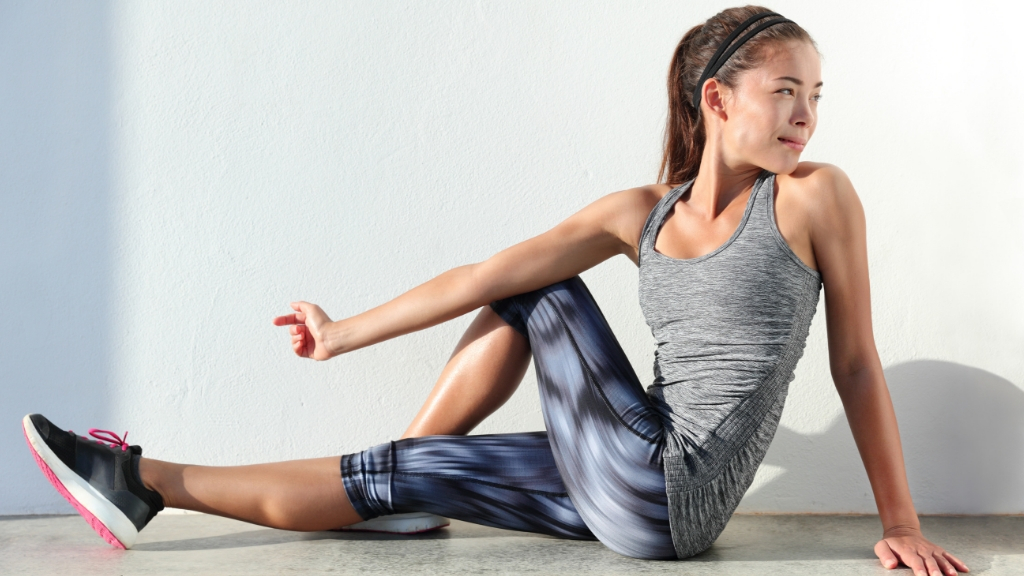
Begin pulling the foot behind you toward your back, continuing this movement for ten to fifteen reps. You should be able to feel this stretch down the front of your back leg, from hip to knee.
8. Side Lunge
The side lunge aids in strengthening the muscles on the inside of your thighs known as the abductors. These help knee and hip stability and keeping your abductors healthy will add longevity to your legs.
Stand with your feet spread slightly wider than your shoulder width, dip down to one side into a lunge, ensuring that the other leg stays straight out and planted on the ground.
Switch sides and repeat on each side for ten reps while holding the position for five to ten seconds depending on your strength and flexibility level. You should feel this stretch primarily in the inner thigh.
9. Hip Flexor & Quad Stretch
When knee pain has overstayed its welcome and lasted too long, doing the typical standing quad stretch can be far too strenuous for those with even minor mobility issues. Rather than lying faceup, this stretch requires you to be face down on your stomach.
| Related: 7 Simple Hand Exercises to Fight Arthritis |
Use a yoga strap (or belt if you don’t want to purchase a yoga strap) and loop it around one of your feet, holding the strap at each side with either hand. Once you’re situated, begin gently pulling the strap towards your back, holding for thirty seconds, then switch sides.
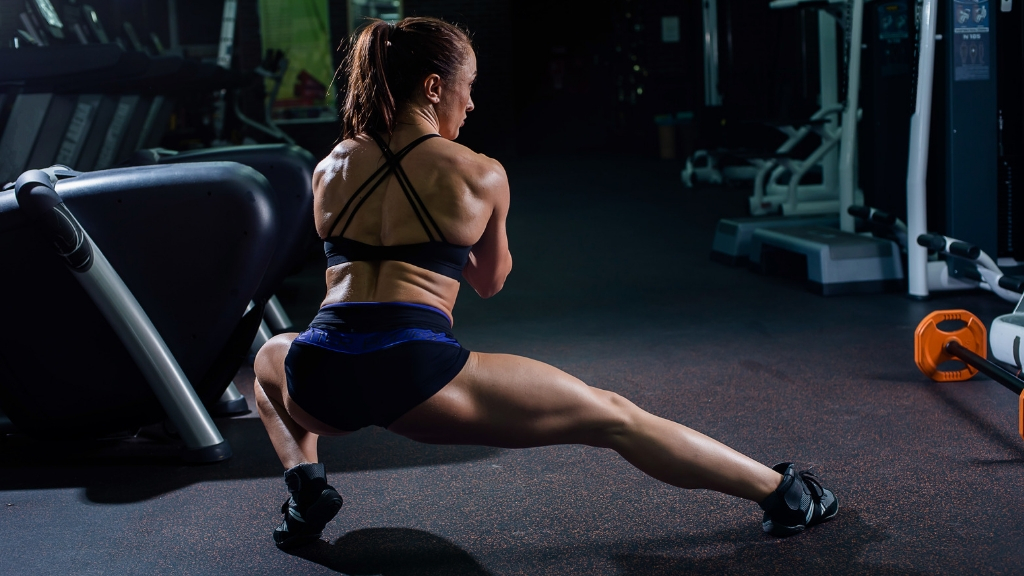
You should most feel this stretch in your hip flexors and quadriceps.
The Bottom Line
While these stretches should help alleviate knee pain that may come with chilly weather, always consult your doctor if the pain persists, swelling and redness occur, or if you are having trouble applying pressure on the joint. (Arthritis can make gout more likely.) And always remember never to force a stretch.
The more you do it, the easier each stretch will become. Seeing your progress is not only beneficial but fun as well. And relieving pain and discomfort can do wonders for improving your mood.












